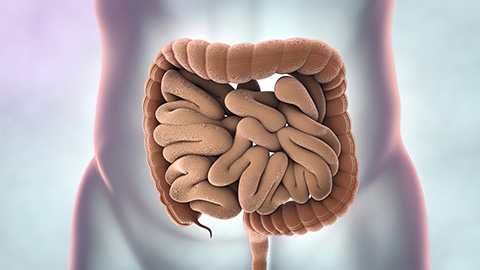
A young woman is newly diagnosed with irritable bowel syndrome. Is massage therapy safe? Can it be helpful? What does a massage therapist need to know ahead of time?
Answers: Yes, yes, and it’s all here in this episode of I Have a Client Who . . .
Resources: 
Pocket Pathology: /abmp-pocket-pathology-app


Massage Mentor Institute
In 2019, Diane Matkowski, aka the Massage Mentor, began a closed Facebook page for hosting discussions with industry leaders. These interviews gave her an idea for The Massage Mentor Institute and Jam Series workshops.
The goal was to create various continuing education classes offered in one spot. The Institute is a space for massage therapists to learn different approaches and philosophies of bodywork and business classes. It’s also home to the Shoulder, Hip, Neck, and Back Jam workshops.
We believe that no one technique works for every human being. Our goal is to help you find your path. We have selected teachers we trust, admire, and believe will help you grow as a licensed massage therapist.
Website: themassagementorinstitute.com
Facebook Group: facebook.com/themassagementor
Instagram: @massagementorinstitute
0:00:01.4 Ruth Werner: Hello, I Have A Client Who listeners, Ruth Werner here, and I'm so excited to let you know that my library of online self-paced continuing education courses has just expanded. I now have a two-hour ethics course called A Doctor's Note is Not Good Enough, and What is Better? This NCBTMB approved course goes into why a doctor's permission or approval or even a prescription doesn't provide the legal or safety protection you might think it does. Then we look at how to start useful conversations with healthcare providers that will actually get us to safe and effective massage for our clients with complex conditions. Visit my website at ruthwerner.com for more information and to register for A Doctor's Note is Not Good Enough and What is Better?
0:00:52.1 Speaker 2: Introducing Back Jam, held online the first four Mondays in May 2023 and hosted by The Massage Mentor Institute. This is the fourth event in a series of workshops focused on a single region of the body. We've gathered the following industry leaders, Til Luchau, James Waslaski, Tom Myers, Diane Lee, Paul Kelly, Sue Hitzmann, Whitney Lowe, Aubrey and Alison Gowing, Allison Denney, Judith Aston, Benny Vaughn, Heath and Nicole Reed and Ruth Werner. Sign up for the Back Jam sponsored by abmp@themassagementorinstitute.com.
[music]
0:01:43.3 RW: Hi, and welcome to I Have A Client Who: Pathology Conversations with Ruth Werner, the podcast where I will discuss your real life stories about clients with conditions that are perplexing or confusing. I'm Ruth Werner, author of "A Massage Therapist's Guide to Pathology", and I have spent decades studying, writing about and teaching about where massage therapy intersects with diseases and conditions that might limit our client's health. We almost always have something good to offer even with our most challenged clients, but we need to figure out a way to do that safely, effectively and within our scope of practice, and sometimes as we have all learned, that is harder than it looks.
0:02:30.2 RW: Today's episode gives me an opportunity to talk about and for you to listen about one of the things I end up talking about more than you'd think, poop and pooping. In fact, the topic we're covering today is something I teach about pretty often, and when I do this in live classes, I usually end up acting out being a piece of poop, a little riff that I think was probably the reason I won the 2005 Jerome Polinski Teacher of the Year Award. I am not making this up. In any case, today's topic is irritable bowel syndrome. I recently asked for some new I Have A Client Who stories, and here is one that a practitioner sent me through my professional Facebook page. They said, "I have a client, 19 years old coming home from college soon for a break. She has a recent diagnosis of IBS, I don't know anything else. What are some important questions to ask her, treatment focus, contraindications?" Well, under normal circumstances, I would refer this contributor to a good pathology book, there are at least a couple that cover this topic thoroughly, but IBS is common, it's pretty fun to talk about, and of the gazillions of things that can go wrong in the gastrointestinal tract, this one is less serious than most, so let's just go ahead and do it.
0:03:50.7 RW: IBS, irritable bowel syndrome is pretty much what it sounds like, the bowel, specifically the large bowel or colon is cranky, it has a slew of other names, including mucous colitis, spastic colon and my favorite, functional bowel syndrome. That one is my favorite because it captures the most important issue, this is a functional, not a structural problem. It's hard to get a hard number on IBS statistics because without intrusive testing, it can be hard to differentiate from several other GI tract problems, and I'll say more about that shortly. But in general, we think IBS affects roughly 12% of the North American population. That's one in eight people who could meet the diagnostic criteria at some point in their life. Females appear to be more susceptible than males, and we see this most often in adults under 45 years old, and in the elderly. It seems to sort of skip middle age. I will say that IBS is a lot more common in the United States than in many places.
0:04:54.8 RW: The prevalence in China, Iran, India, Israel, much lower. This suggests dietary factors, of course, but it could also point to cultural issues and reasons people pursue or don't pursue healthcare. Essentially, what's going on in IBS is that normal peristalsis in the colon becomes uncoordinated and disorganised. And you remember peristalsis, right? It's the way tubes contract with a pinch that moves like a wave pushing material in the desired direction along a tube. We see a form of peristalsis in cardiovascular and lymphatic vessels as well, but in the GI tract, specifically in the colon, normal peristalsis slows down a bit so we can recover any water from the fecal material that we need to hold on to, and then those contractions have to get stronger to move that denser material all the way into the rectum, that holding area until it's possible or convenient to evacuate.
0:05:54.7 RW: Aren't you glad you tuned in today? And sometimes the feedback loop between the brain and the smooth muscle cells in the colon sends inaccurate messages about how much work is actually needed. We contract too hard and the fecal material gets super compacted and then even harder to move forward, this is constipation, or we don't contract enough, and the fecal material slides right through, but we don't recover enough water, and that means diarrhea and dehydration. And for lots of people, it's a daily surprise about which one of those is going to be dominant. But the real problem here isn't in the wall of the colon, it's in that connection between the brain and the smooth muscle cells. This has a name, it's the brain-gut axis, and the brain-gut axis does more than set the tone and pace for peristalsis, though it's highly influenced by our gut microbiome, and it affects the entire GI tract. And that is all a topic for another day.
0:06:58.1 RW: Okay, so did you hear the part where the people with IBS have bunches of scar tissue inside the colon or ulceration or fistula, tiny tubes that allow fecal matter to escape into the peritoneum.
0:07:11.8 RW: Did you hear about the little pouches that dangle off their colon and collect poop or tumours or parasites? No, you didn't hear any of those things, that's because IBS is a functional problem, not a structural one. All the parts are fine, they're just not coordinating properly. And this causes pain and bloating and gas, and diarrhea and constipation. But given the options that I just described, which include things like diverticulitis or Crohn's disease or ulcerative colitis or colon cancer, that those are all serious and sometimes life-threatening, IBS begins to look like something that can be painful and incredibly inconvenient, but also manageable and not life-threatening. But what causes this? It's probably different for different people. For some, it's definitely stress-related and making appropriate changes in jobs or relationships or other issues can lead to substantial symptomatic relief. It's very common for IBS to appear alongside fibromyalgia and chronic fatigue syndrome, to other chronic pain conditions that are directed by nervous system reactions to stressors. We do see that for some people, IBS occurs after a gut infection and it is sometimes associated with small intestinal bacterial overgrowth that creates some additional strategies for treatment, but this is not always the case.
0:08:41.6 RW: So irritable bowel syndrome is painful. It can range from mild and a little annoying to being debilitating. The pain can be general abdominal pain or pain with defecation or hard cramps or any combination of those things. Some people experience mostly constipation, and this is sometimes called IBS-C, others have mainly diarrhea, IBS-D. IBS-M means their symptoms are mixed and they never know what to expect from one day to another, and IBS-A is alternating symptoms, so they'll have diarrhea for a while and then they'll switch to constipation, but it just never seems to normalise. And of course, stress makes everything worse which opens up a vicious circle of stress and GI dysfunction and more stress and more dysfunction, and so on. One thing people with IBS won't see, however, is blood in the stool, and fever isn't typical either, because remember, we're not talking about infection or tumours or ulcers. So what options are there for someone with IBS? Well, there are plenty of choices for symptomatic relief: Identifying triggering foods or emotional circumstances and avoiding them. Adding fiber to the diet so the colon has more bulk to press against and this can help to organise peristalsis contractions.
0:10:04.4 RW: Some research found benefits with peppermint and probiotics and acupuncture. And the meds might include fecal binders or laxatives or antacids and so on. If depression is a factor and it often is, then anti-depressants can be helpful too, but IBS is one of those whole person issues involving biology for sure, but also emotional and mental and relationship states. So successful management means addressing all of those domains, not just the constipation or the diarrhea. And that is where massage therapy comes in, because our work does touch in on all of those domains, if we do it well. I am not saying that massage fixes IBS, but it can be part of a strategy that includes other approaches for pain management and dealing with anxiety and digestive dysregulation that goes with this common and uncomfortable and often embarrassing disorder. I will add that the idea of massage has mixed appeal for a lot of people with IBS. Getting a great session sounds wonderful, of course, but what if they need to use the toilet right in the middle of the appointment? Or worse, what if they pass gas? And as massage therapists, we know the signs when someone is struggling really hard to keep one in and it's pretty hard to help them relax if they're all clenched up.
0:11:32.6 RW: And this is why I was so happy one day to see in the office of a colleague, a beautifully framed sign that said, "It's not a good massage until somebody farts." People with IBS may not welcome abdominal touch at first, but I encourage massage therapists at very least, to offer the experience of warm, loving hands on the belly through the sheet if need be, and from here, it might be possible eventually to move up to clockwise effleurage and maybe even a lovely petrissage to stretch the abdominal wall and help stimulate healthy peristalsis. As people learn to experience their belly as an integral part of their whole beloved selves, possibly some of the worst aspects of IBS may lighten up. What can we do to promote this? What can our contributor think about as they prepare to work with this newly diagnosed young woman? Well, obviously, we wanna know a few things. What are the most bothersome symptoms? What do they do to feel better? What meds do they use? What would they like to accomplish with massage? And are they nervous about anything like needing to use the bathroom in the middle of the session. And by the way, what can the massage therapists do to make that easy?
0:12:49.7 RW: Are they nervous about passing gas? I heard some massage therapists talk about farts as a standing ovation for massage because it shows a deep level of relaxation, so it's something to celebrate. I bet that with an opening conversation that anticipates and discharges some of a new client's concerns followed by a session of gentle compassionate massage, our contributor can set the foundation for a really beneficial relationship with lots of good things to offer for this young person.
0:13:21.6 RW: Hey everybody, thanks for listening to I Have A Client Who: Pathology Conversations with Ruth Werner. Remember, you can send me your I Have A Client Who stories to ihaveaclientwho@abmp.com. That's, ihaveaclientwho, all one word, all lowercase, @abmp.com. I can't wait to see what you send me and I'll see you next time.
[music]